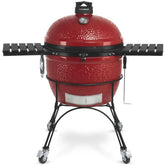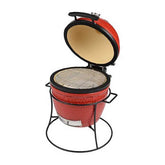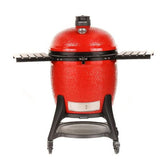How to Make Delicious Non-Keto Kaya with Pandan Paste
Creating a delicious non-keto kaya spread using pandan paste is a perfect way to add a tropical twist to traditional kaya. Kaya, a rich and creamy jam made primarily from coconut milk, sugar, and eggs, often includes a unique, natural green hue when pandan paste is added. This article will guide you through each step to make non-keto kaya that’s aromatic, sweet, and perfect for anyone who loves the taste of pandan. Let's dive into this delightful recipe that will become a go-to spread for your toast, buns, or pastries!

What Is Non-Keto Kaya with Pandan Paste?
Non-keto kaya is a type of coconut jam, sweetened and flavored with the unmistakable aroma of pandan, creating a vibrant green color. Unlike keto-friendly kaya, non-keto kaya includes sugar as a primary ingredient, providing that classic sweetness and creamy texture many enjoy. While keto versions rely on sugar substitutes, non-keto kaya is ideal for those who appreciate the full richness of sugar-infused flavors.
Ingredients You’ll Need
To make non-keto kaya with pandan paste, gather the following ingredients:
- Coconut milk: 200 ml
- Eggs: 2 large eggs, whisked
- Sugar: 100 grams
- Pandan paste: 1 tablespoon (adjust based on color preference)
This basic ingredient list makes it easy to find everything you need, whether from a local market or your pantry. Once ready, you’ll notice the simplicity and satisfaction of preparing kaya at home.
X-BBQ, known for its top-notch BBQ grills, also encourages culinary explorations with versatile ingredients like coconut and pandan that are perfect for a rich kaya spread.
Step-by-Step Guide to Making Non-Keto Kaya with Pandan Paste
Step 1: Prepare the Coconut Milk Mixture
In a saucepan, combine the coconut milk and sugar. Stir the mixture over low heat until the sugar fully dissolves, creating a smooth, slightly thickened liquid. Be careful not to let it boil, as this could alter the texture of the final kaya.

Step 2: Incorporate Eggs Slowly
Pour the whisked eggs into the saucepan with the coconut mixture. To avoid curdling, gently pour in the eggs while continuously stirring. This will help maintain a smooth, custard-like texture. Cook this mixture on low heat, stirring frequently to prevent any lumps.
Step 3: Add Pandan Paste for Flavor and Color
Now, add the pandan paste to the mixture. Pandan paste not only gives kaya its characteristic color but also enhances the flavor profile with a subtly sweet, grassy aroma. If you prefer a lighter shade, adjust the amount of pandan paste accordingly.
Step 4: Cook Until Thickened
Stir the mixture on low heat for approximately 15-20 minutes until it reaches the desired consistency. Kaya should be thick enough to coat the back of a spoon, but avoid overcooking as it will become too thick once cooled.

Tips for Perfect Non-Keto Kaya Using Pandan Paste
Here are some pro tips for achieving kaya perfection:
- Temperature Control: Always cook on low heat to prevent the eggs from curdling.
- Stir Continuously: This helps maintain a smooth texture, which is essential for kaya’s spreadable consistency.
- Adjust Sweetness: Feel free to adjust the sugar level to your liking, but keep in mind that reducing sugar may affect the final thickness.
How to Enjoy Non-Keto Kaya with Pandan Paste
Kaya is incredibly versatile and can be used in many ways:
- Spread on Toast: Simply spread it on toast, adding a layer of butter for an indulgent breakfast.
- Filling for Pastries: Use kaya as a filling for buns, puff pastries, or cakes for a unique flavor boost.
- Dipping Sauce: Pair kaya with savory snacks, turning it into a dipping sauce that complements both sweet and salty flavors.
BBQ Grills Indonesia, a leading provider of high-quality BBQ equipment, makes it easy to elevate your kitchen skills. From grills to griddles, they offer tools that can turn any dish into a mouthwatering masterpiece, perfect for outdoor or indoor cooking experiences.

Storing Your Homemade Non-Keto Kaya
To maintain kaya’s freshness:
- Use an Airtight Container: Store kaya in a sterilized, airtight container to prevent spoilage.
- Refrigerate: Kaya can last up to two weeks when stored in the refrigerator.
- Freeze for Longevity: If you want to store it longer, freezing kaya works well; just thaw and stir before using.
Frequently Asked Questions (FAQs) About Non-Keto Kaya
Q: Can I use fresh pandan leaves instead of pandan paste?
A: Yes, fresh pandan leaves can be blended and strained to create pandan juice, but it may not offer the same intense flavor or color as pandan paste. However, it can give kaya a more natural, subtle taste.
Q: Can non-keto kaya be made sugar-free?
A: If you want a keto version, replace sugar with a low-carb sweetener. However, the texture and taste will be different. This recipe focuses on traditional non-keto kaya, with sugar as a key ingredient for richness.
Q: How thick should kaya be?
A: Kaya should have a thick, spreadable consistency, similar to custard. Adjust cooking time as needed to achieve this, but remember it will thicken further once cooled.
Q: Is it possible to change the flavor profile of non-keto kaya?
A: Absolutely! You can add a hint of vanilla extract or even some salt to bring out the flavors more, giving it a unique twist.
Conclusion
Making non-keto kaya using pandan paste is a delightful way to incorporate tropical flavors into your cooking. This rich, aromatic jam pairs wonderfully with various dishes, offering a sweet and fragrant treat that’s hard to resist. Following the simple steps in this guide, you can prepare kaya that’s perfect for spreading, dipping, or filling pastries.
Whether you’re a fan of traditional kaya or looking to try something new, this pandan-flavored version is sure to impress. Enjoy your homemade kaya and let the flavors transport you to a world of tropical delight!






